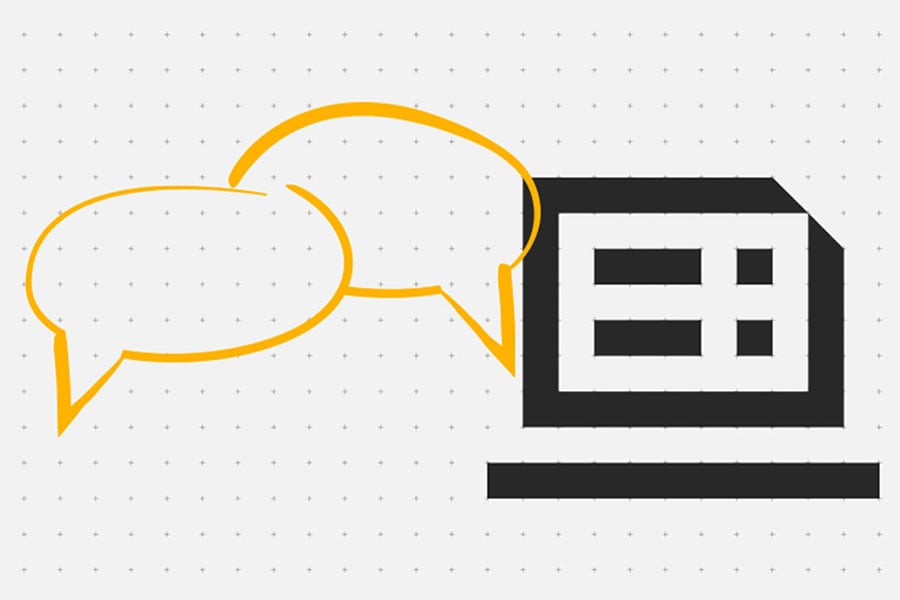
Even before this global pandemic, an estimated 68 percent of Australian companies allowed employees to work from home, so the concept is not exactly new. Some industries are more suited than others to remote working, but the success of this phenomenon will be largely dictated by one common factor: remote team communication.
A business can sport innovative products, the best talent and even the best-fit technology, but without a well-coordinated and fluid system of communication across all levels, remote working will cause more headaches than wins for an organisation.
New platforms, better communication
While good communication is known to be a key ingredient for organisational success, it can be easily compromised by difficult deadlines and stealthy workloads. Studies show that ineffective workplace communication can cost companies an average of $420,000 per year - and that is while in a centralised office space.
The complexities of communication have exponentially increased now that face-to-face interactions are no longer part of the working day. Technology - the right technology - needs to do the heavy lifting, creating engaging and easy-to-use communication channels. However, people also need to be ready to proactively adapt behaviours to ensure good remote team communication.
The number of tools at the disposal of companies in the digital age is vast, ranging from group video calls and instant chats to online webinars. Virtual seminars can connect leaders across the globe, reducing the need for physical meetings and business travel; instant messaging can resolve peer doubts in seconds; and new applications, which help us plan and organise our work, reduce the volume of unnecessary emails. Huon IT, a Kyocera Group Company, recommends setting up tools such as Microsoft Teams, which includes instant chat, video calls and easy document sharing tools, to improve communications with your team.
The impact of video
When working remotely, maintaining face-to-face contact with colleagues helps to keep people engaged and diminishes feelings of isolation. Of course, employee engagement also results in higher levels of productivity.
Scheduled video calls with a set start and end time puts the onus on those in attendance to communicate in a clear and succinct manner, and to deliver important messages in a way that can be easily understood. One call with a summary email should suffice for the vast majority of work to be completed as required when needed.
However, the concept of widespread remote working is still new to many organisations, and deeply ingrained behaviours and processes are not easy to uproot or change. A culture shift is required, and here in ANZ we are seeing businesses move faster with less resistance to change, according to Huon IT.
“COVID-19 has sped up business transformation at an unprecedented rate and we’re seeing businesses adopt new technologies faster than ever before; one month has been the equivalent of one year in progress. And to aid in this, end-users are not ‘pushing back’ (resisting change) like they used to,” says Damian Huon, CEO at Huon IT, a Kyocera Group Company.
New behaviours for new outcomes
The Harvard Business Review details how businesses need to create new norms that establish clarity in remote team communication: “Companies such as Merck have created acronyms for their digital communications like “Four Hour Response (4HR)” and “No Need to Respond (NNTR)” that bring predictability and certainty to virtual conversations.”
The mix of technology makes remote team communication varied, fun and interactive. To-Do List and project management tools, such as Microsoft 365’s Planner, enable teams to plan individual workloads and group projects by compartmentalising tasks in an easy way. These tasks can be assigned to certain team members and provide the team with complete transparency, allowing managers to track progress, highlight bottlenecks and address problem areas.
These technologies encourage more efficient and effective communication, just as we realise the importance of transmitting clear messages on our Microsoft Teams video calls and instant chats. The tools are there to make us more efficient, more productive, and happier in our work - and we’re adapting behaviours accordingly.
The future of communication
The way we communicate has changed drastically in the digital age and continues to evolve at a breath-taking speed. Remote working can give workers the freedom and autonomy they crave in order to achieve their potential while benefiting from a better work-life balance if the right technologies, strategies and habits are put in place.
Effective communication is, as it always has been, the bedrock of organisational success. While technology can drive benefits and enable stronger communication between dispersed workforces, our habits and behaviours also need to adapt. Otherwise, very little will change.
Building a resilient and productive hybrid work environment requires the right hardware, software and processes. Download our Guide to Hybrid Workplace Strategy for a step-by-step strategy for implementing an effective hybrid work model that equips your employees to work anywhere, any time.






